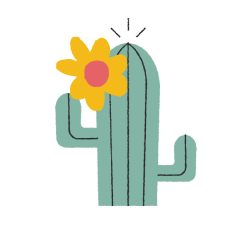
Stressketeers
Stress-relieving Support for Students
Timeline:
12 weeks
My Role:
User Interviews | Ideation Studio Lead | Usability Tests | Interactive Prototyping
Introduction
This project collaborated with UofT's Innovation Hub, and our group focused on researching Whole Student Development. We believe that All-round Development encompasses various areas, including the importance of a healthy mind. So we would like to help the students with mental health support.
Research Process
The research goal was to gain a thorough and comprehensive understanding of users’ requirements by conducting both secondary and primary research on:
What are some of the factors that contribute to student stress?
What types of support are currently available for students coping with stress?
What challenges do stressed students face when seeking help?
Research Narrow Down
Upon analyzing the research results, we discovered that a majority of the participants attributed their stress to schoolwork and career seeking, a factor that is beyond our control and influence. As a team, we resolved to concentrate on providing assistance to students in the effective management of their stress levels.
Affinity Diagram of Clustered Themes from Research Result

Uncovered User Needs
Time Efficiency
Many students have packed schedules and may feel overwhelmed when seeking mental health support online due to the abundance of available resources. Streamlining the search for these resources can help save time and prevent confusion.
01Effectiveness
With a wide range of consulting formats, methods, and price levels, along with varying personal background experiences, it can be difficult for students to find the best resource for their needs on their first search. Therefore, we aim to help students identify the most suitable resource for their requirements.
02
How to improve the process for students to find appropriate stress-relieving resources?
Innovative Ideation
Team Challenge:
Vague Results, Lack of Concrete Concepts
During the initial ideation round, we encountered a challenge as our brainstorming yielded vague outcomes.
Following a group vote, we identified the “Peer Helping Community” as the most feasible and impactful idea. However, the concept remained general, lacking a clear format for effectively addressing student stress.
Alternatives: Exploring the Formats for the Peer Helping Community
Recognizing the need for clarity and specificity in our “Peer Helping Community” concept, our team embarked on a second round of ideation to refine our ideas and meet our users' needs.
During this phase, 29 more specific ideas were generated. After grouping them into distinct clusters based on their content. Each cluster was assigned a theme that encapsulated its essence.
Two themes emerged as stand-outs: the "Google Review Style" and the "Forum Style." These themes formed the foundation of our “Peer Helping Community”, shaping its content and defining its format.

Idea Collection
Organized Ideas from Two Rounds
Design Approach
Peer Helping Community
- Peer-Reviewed Resources
Stressed students can receive recommendations for stress-relieving resources from peers in similar situations and lessen the amount of time spent searching for help.
Peer Helping Community
- Peer Discussions
They can also ask experienced peers questions about stress-relieving resources to make sure they are getting the most appropriate help.
User Journey Map (As-Is and To-Be )
Sketches
The Two Main Workflows Tested
Iterative User Testing 1
Main Workflows Test on Sketches & Findings
The purpose of this test was to assess the intuition of the main workflows of this application to determine whether users could comprehend the purpose of the application. The test results indicated:
Properly labelling the app name, icons, and features is crucial to enhance navigation.
To minimize user confusion, we were recommended to reduce the amount of text displayed on the screen.
Prototyping
Mid-Fidelity Design of Major Pages
Iterative User Testing 2
Features Test on Interactive Prototypes & Findings
The second test aims to evaluate the usability of the refined and more specific features we designed, specifically whether they are intuitive for users to use. Some identified concerns including:
Several participants expressed confusion about the sorting and filtering features, as they were unsure about the distinctions between various filters.
Some of the features, like the “Compare“ resources, were not intuitive enough for users to discover at first glance.
User Feedback
The application's purpose received positive feedback from users. They found the peer community to be supportive and necessary for their needs. Users appreciated the straightforward approach of having peers guide them to helpful stress-relieving resources.
Personal Growth & Reflection
It is crucial to keep in mind that the ultimate aim of design is not simply to generate an idea. Rather, it is to devise a targeted solution that addresses the specific challenges faced by users. This is why the majority of UX design involves identifying users' requirements and the barriers that hinder their ability to meet those requirements.
Mockup Reference: <a href="https://www.freepik.com/free-photo/woman-checking-time-from-her phone_17848530.htm#page=2&query=iphone%20mockup&position=39&from_view=search&track=sph">Image by rawpixel.com</a> on Freepik
Icon Reference: icons8.com



